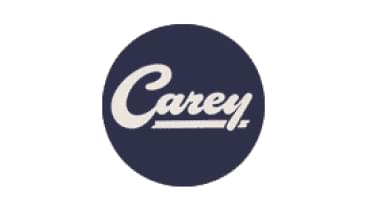Rapid-American Corp./Philip Carey Manufacturing Corp.
Rapid-American Corporation filed for bankruptcy in 2013 after facing approximately 275,000 asbestos-related claims. The legal trouble spawned from its merger in the 1970s with Philip Carey Manufacturing Corporation, which produced asbestos insulation products.

History of Rapid-American Corp. with Asbestos
Philip Carey Manufacturing Corporation was a longtime manufacturer of insulation products for industrial equipment, including boilers, pipes, generators and more.
For nearly 80 years, the company mined asbestos and manufactured asbestos-containing products for various industries. Sometimes referred to as “Old Carey,” the company was established in Ohio in 1888.
In October 1972, a merger between Philip Carey and another Ohio-based company called Rapid-American Corporation occurred.
Because Philip Carey Manufacturing used asbestos to make products, many workers were dangerously exposed to these toxic fibers. The company, along with its subsidiaries and spinoffs, eventually became the target of substantial legal claims after these products harmed employees and consumers.
Notable Asbestos Lawsuits Against Rapid-American
Rapid-American started facing asbestos-related lawsuits in 1974 after it acquired Philip Carey. The thousands of legal claims against Rapid-American and its subsidiaries took a financial toll on the company.
The company filed for Chapter 11 bankruptcy protection in 2013 because it was facing an estimated 275,000 asbestos claims. Rapid-American only settled about 75,000 of the claims and listed between $100 million and $500 million in dept, according to court filings.
In July 2017, Rapid-American and two other groups requested a protective order from double-dipping in the asbestos recovery system. U.S. Bankruptcy Judge Stuart Bernstein denied the order on Feb. 12, 2018, refusing to strike the subpoenas issued by insurers that process asbestos personal injury claims.
Pustejovsky v. Rapid-American Corp.
Henry Pustejovsky was exposed to asbestos from 1954 through 1979 as a metal worker.
In 1982, he was diagnosed with asbestosis, a nonmalignant disease caused by inhaling asbestos fibers. Pustejovsky filed a lawsuit against Johns-Manville Corporation, one of the asbestos product suppliers to his employer, and received a $25,000 settlement.
In 1994, Pustejovsky was diagnosed with mesothelioma, a terminal cancer caused by asbestos exposure. He then sued Rapid-American and other asbestos suppliers for his injuries.
Defendants argued that Pustejovsky was out of the statutes of limitations for a second claim because he first discovered his injuries from occupational asbestos exposure 12 years earlier with the asbestosis diagnosis.
Pustejovsky showed undisputed medical evidence that asbestosis and mesothelioma are separate injuries. However, the trial court granted summary judgment to the defendants based on statute of limitations and an appeals court held up the decision.
In 2010, the Texas Supreme Court reversed the decision. It ruled that a person who previously received compensation for an asbestos-related disease should have the opportunity to pursue a second lawsuit if they are later diagnosed with mesothelioma.
Novicki v. Rapid-American
In March 1997, the family of Julius L. Novicki filed a lawsuit against Rapid-American, along with 44 additional defendants, for wrongful death relating to the “sale, installation and repair of asbestos products.”
Novicki spent seven years as a welder where he used asbestos-containing products manufactured by Rapid-American and other companies. He later developed mesothelioma and died in 1995.
The case, Novicki v. Rapid-American, further exposed the occupational dangers associated with exposure to Philip Carey asbestos products.
Rapid-American Bankruptcy and Legal Proceedings
After Rapid-American filed for Chapter 11 bankruptcy protection in 2013, the company has faced an ongoing legal saga with insurers responsible for covering liabilities.
Several insurers that issued policies to Rapid became insolvent and unable to pay the full amounts of those policies. The St. Paul Fire and Marine Insurance Co. policy was the highest at $3 million of primary coverage and $60 million of excess coverage.
In June 2016, U.S. Bankruptcy Judge Stuart M. Bernstein ruled that the majority of excess insurers owed nothing to Rapid-American for asbestos claims until the company exhausted the $700 million it promised to pay.
Bernstein’s ruling in February 2018 cleared the insurers to subpoena Rapid-American over asbestos claim information. Those subpoenas were issued in May 2019 in a New York bankruptcy court.
ANew York bankruptcy judge approved Rapid-American’s bankruptcy reorganization plan in September 2021, according to Law360. The judge approved the company’s plan to use $12.3 million in insurance settlements to fund an asbestos trust that will handle future claims.
The company said it is using the last of its assets to establish the fund and will dissolve the organization after 64 years of operation.

Gain access to trust funds, grants and other forms of compensation for you or your loved ones.
Get Help NowPhilip Carey Asbestos Products
Philip Carey used asbestos to manufacture a variety of industrial equipment, including boilers, pipes, insulation and generators. Carey Canada, a subsidiary of Celotex, even owned and operated an asbestos mine in Quebec.
Examples of the asbestos products manufactured by the original Philip Carey Manufacturing Corporation include:
- Carey-Canadian Asbestos 7RF Floats
- Carey Thermo-Board concrete
- Carey Rock Wool
- Asbestos Magnesia Diatomite Rock Wool
- Carey Stone
- Fire-Chex Singles
Workers and Occupations at Risk
Anyone who worked with equipment or asbestos products manufactured by Philip Carey before the 1970s is at high risk of developing an asbestos-related disease. Mesothelioma and related diseases typically take decades to develop after a person is exposed to asbestos.
Industrial engineers, metal and factory workers, machinists and other industrial occupations were among the most at risk for exposure to these products.
Receiving regular screenings from your doctor is recommended to anyone who believes they were at increased risk of asbestos exposure.
Recommended Reading


